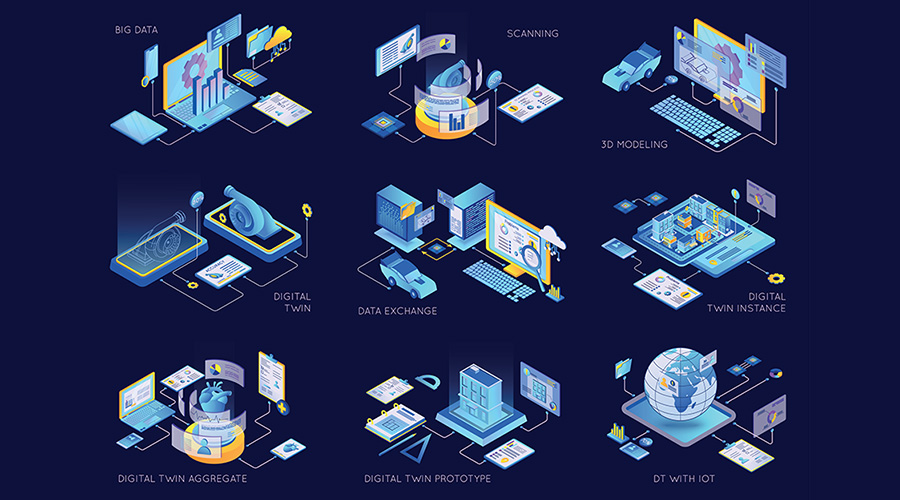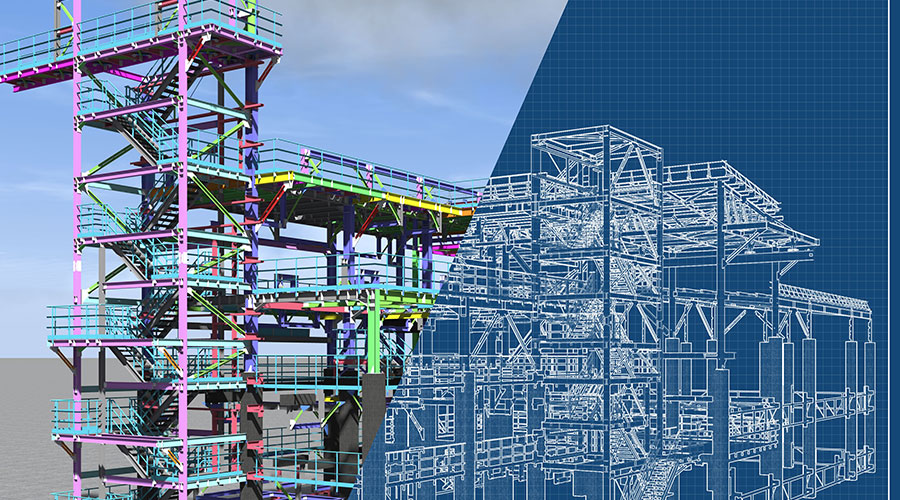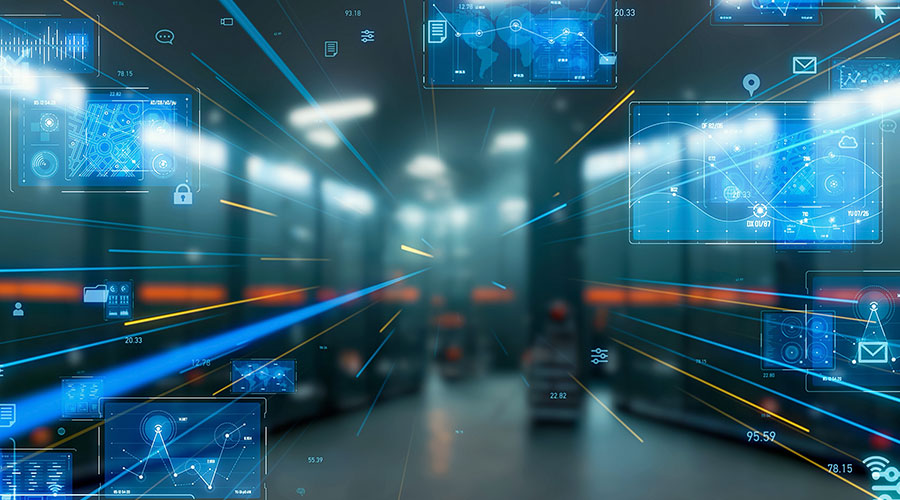Scan to BIM: Prelude to Creating Digital Twins
Understanding the relationship can unlock digital transformation of the built environment.
By David Black, Contributing Writer
In recent years, the construction and architecture industries have seen a surge in the adoption of digital technologies that promise to transform how projects are designed, managed and maintained. Among these, two concepts have garnered significant attention: Scan to BIM (building information modeling) and digital twins. While each of these technologies holds immense potential on its own, there is a growing recognition that Scan to BIM serves as a critical precursor to the creation of digital twins. Understanding this relationship is key to unlocking the full benefits of digital transformation in the built environment.
BIM is a process that involves the generation and management of digital representations of physical and functional characteristics of places. BIM is much more than just a 3D model, it incorporates data that describes every aspect of a building, from its structural elements to its electrical systems, and even its environmental impact. This information-rich model becomes a central repository that can be used by architects, engineers, contractors, and facility managers throughout the lifecycle of an institutional and commercial building.
BIM has revolutionized the construction industry by enabling more precise planning, improved collaboration among stakeholders and more efficient project delivery. However, one of the challenges with BIM is that it traditionally relies on data from the design phase, which may not always reflect the as-built condition of the structure. This is where Scan to BIM comes into play.
What is Scan to BIM?
Scan to BIM is the process of using 3D laser scanning technology to capture accurate, real-time data of existing structures and then converting this data into a detailed BIM model. The process begins with the use of laser scanners or photogrammetry to create a point cloud, which is a dense collection of data points that represent the surfaces of objects in a space. This point cloud is then imported into BIM software, where it is used to generate a digital model that accurately reflects the as-built conditions of the structure.
This technology is particularly valuable for renovation projects, where accurate documentation of existing conditions is crucial. It also plays a critical role in projects involving heritage buildings, where preserving historical accuracy is essential. By providing a highly accurate and detailed digital representation of a building's current state, Scan to BIM ensures that the resulting BIM model is a true reflection of reality, rather than just an idealized design.
The accuracy of a BIM model is crucial for the success of any project. A model that accurately reflects the as-built conditions can help avoid costly errors during construction, reduce rework, and ensure that the final product meets the design intent. Scan to BIM enhances this accuracy by providing precise data that can be used to verify and update the BIM model as needed.
In addition to improving the accuracy of the BIM model, Scan to BIM also facilitates better decision-making. With a detailed digital model of the existing conditions, project teams can more easily assess the feasibility of design options, identify potential issues, and develop solutions before construction begins. This proactive approach can lead to significant cost savings and a more efficient construction process.
Digital twins: The next step
While BIM provides a comprehensive digital representation of a building, the concept of a digital twin takes this a step further. A digital twin is a dynamic, real-time digital replica of a physical asset that not only reflects its current state but also simulates its behavior over time. This means that a digital twin can be used to monitor the performance of a building, predict future issues, and optimize operations.
Digital twins are created by integrating BIM data with real-time data from sensors and other Internet of Things (IoT) devices. This combination of static and dynamic data enables the digital twin to provide a continuously updated representation of the building, which can be used for a wide range of applications, including predictive maintenance, energy management, and even occupant comfort optimization.
Creating digital twins
The creation of a digital twin begins with an accurate digital model of the physical asset, which is where Scan to BIM plays a crucial role. Without accurate as-built data, the digital twin would not be able to provide a reliable representation of the building. The point cloud data captured during the Scan to BIM process serves as the foundation for the digital twin, ensuring that the digital replica is an accurate reflection of reality.
Moreover, the Scan to BIM process can be repeated over time to capture changes in the building's condition, which can then be used to update the digital twin. This continuous feedback loop ensures that the digital twin remains an accurate and up-to-date representation of the physical asset throughout its lifecycle.
The potential applications of digital twins in the built environment are vast. For example, facility managers can use digital twins to monitor the performance of building systems in real-time, identifying issues before they become critical and optimizing maintenance schedules to reduce downtime. Similarly, architects and engineers can use digital twins to simulate the impact of design changes on the building's performance, allowing them to make more informed decisions.
Digital twins can also play a key role in sustainability efforts. By integrating data on energy usage, water consumption, and other environmental factors, digital twins can help building owners and operators optimize resource use and reduce their carbon footprint. In the context of smart cities, digital twins can be used to model and manage the performance of entire neighborhoods or districts, providing a powerful tool for urban planners and policymakers.
Challenges and future directions
While the potential of Scan to BIM and digital twins is enormous, there are still challenges to be addressed. One of the key challenges is the integration of data from multiple sources, including BIM models, IoT devices, and other digital systems. Ensuring that this data is accurate, consistent, and interoperable is critical to the success of digital twins.
Another challenge is the need for skilled professionals who can manage the complex process of creating and maintaining digital twins. This requires expertise in BIM, data management, and digital technologies and an understanding of the specific needs and challenges of the built environment.
Despite these challenges, the future of Scan to BIM and digital twins is bright. As technology continues to evolve, we can expect to see even more sophisticated tools and techniques for capturing, modeling, and managing digital representations of the built environment. This will open new possibilities for improving the design, construction, and operation of buildings, ultimately leading to more efficient, sustainable, and resilient built environments.
In conclusion, Scan to BIM is a critical precursor to the creation of digital twins. By providing an accurate and detailed digital representation of existing conditions, Scan to BIM lays the foundation for the development of digital twins, which can then be used to monitor, manage, and optimize the performance of buildings throughout their lifecycle. As the construction and architecture industries continue to embrace digital transformation, the integration of Scan to BIM and digital twins will play a key role in shaping the future of the built environment.
Black is the Vice President of NV5's Building Digitization group. He has executed reality capture projects in various building types including industrial, commercial, gaming and technology. David is also an expert in the engineering design of MEP systems and construction documentation which enables scan-to-BIM projects to be used as the basis for future design projects.
Related Topics:












